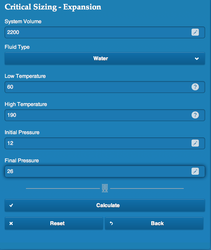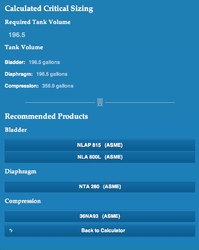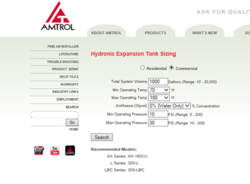Bob Rohr
Minister of Fire
The tank sizer at Wessels site is handy as it shows the difference in a plain steel tank and a diaphragm or bladder tank.
It's important to know a plain steel tank will need to be 75- 80% larger than a diaphragm tank, as there is no pre-charge available. Here is an example of a system with 2200 gallons capacity.
It's best to use these calculators, not rule of thumb %'s, especially if you are planning to buy a large diaphragm tank.
www.wessel.com
It's important to know a plain steel tank will need to be 75- 80% larger than a diaphragm tank, as there is no pre-charge available. Here is an example of a system with 2200 gallons capacity.
It's best to use these calculators, not rule of thumb %'s, especially if you are planning to buy a large diaphragm tank.
www.wessel.com




